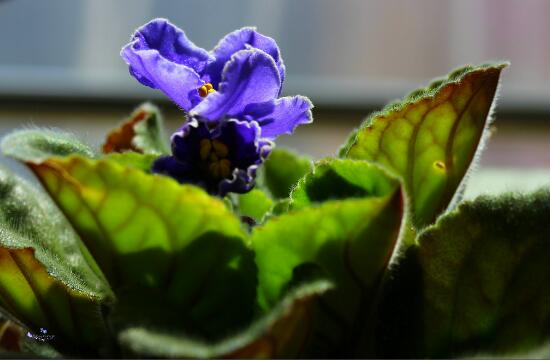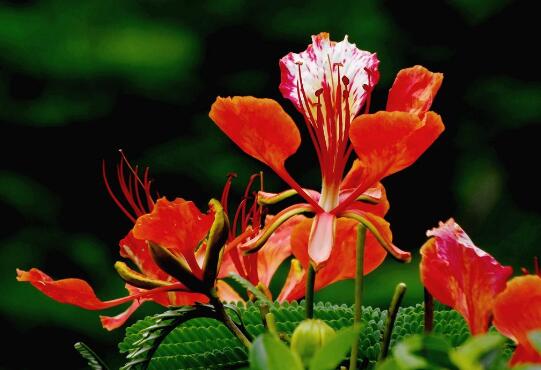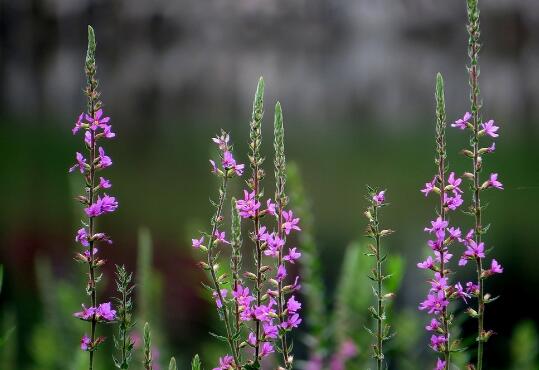How to raise African violets, the culture methods and matters needing attention of African violets
African Violet, friends who have seen it should be impressed. It is small and exquisite in shape and colorful, and it is very ornamental when raised indoors. In life, because African violets are good-looking, many people want to keep them, so how to raise African violets? The following are carefully arranged by the editor of the African Violet culture methods and points for attention, very detailed, friends who want to raise must have a look.
First, how to raise African violets and understand their habits

African violets like warm, moist and ventilated semi-shady environment, it is not resistant to high temperature, afraid of strong light, so how to raise African violets indoors? We should put it in a place with good light, avoid direct light, and take measures to keep warm in winter. As for cultivated soil, it is better to be well ventilated, water-conserving and fertile soil.
II. Culture methods and matters needing attention of African violets
1. Soil
How to raise African violets, first of all, we should re-choose potted soil. Nowadays, most of the potted plants are purchased online, but the soil is cheap and normal maintenance can ensure plant growth, but if you want the beauty of African violets, you'd better choose the soil again.
Soil selection: according to the growth habits of African Violet, it likes well drained, water and fertile soil. In this regard, the editor recommends that people use peat soil, vermiculite, perlite mixed soil, or rotten leaf soil, peat soil and sand soil mixed soil.
2. Lighting
Light is the key to plant growth, so light is indispensable in the culture of African violets. However, African violets are more resistant to shade and prefer semi-shade environment, and grow more under suitable scattered light. So when breeding indoors, it is best to put it on the windowsill.
Note: African violets avoid strong light, should be properly shaded in summer to avoid sunburn leaves; in addition, we should not put it in the shade for a long time, otherwise it will affect plant growth, resulting in the phenomenon of African violets not blooming or overgrowing.
3. Temperature
How to raise African violets, timely adjustment of the temperature is also very important. It is understood that African violets prefer a warm environment, and the most suitable growth temperature is about 16-24 ℃, including 18-24 ℃ from April to October and 12-16 ℃ from October to April of the following year. By adjusting the temperature all the time, African violets can bloom more beautifully.
Note: African violets are not resistant to high temperature or cold, in summer, the daytime temperature should not exceed 30 ℃, otherwise the plant growth should be inhibited; in winter, the temperature should not be lower than 10 ℃, otherwise it is prone to freezing injury.
4. Watering
Water is the source of life, so watering is a very important part of the culture of African violets. African violets like the humid environment, appropriate watering in spring, more watering in summer, gradually decreasing temperature in autumn and winter, and appropriate reduction in watering. When the weather is dry, water spraying should also be used to increase the air humidity of the surrounding environment.
Note: African violets avoid stagnant water, when watering plants, we can not water too much, just keep the pot soil slightly wet, otherwise it will cause stem and leaf rot; of course, watering can not be less, otherwise the pedicel of the plant will droop and shorten the florescence of African violets. In addition, avoid leaves stained with water, once found that should be cleaned in time, otherwise it will also cause leaf decay.
5. Fertilization
After watering, let's talk about fertilization, which is indispensable in the growth of African violets. African Violet likes fertilizer, and it should be fertilized every 10-20 days during the growing period. It is suitable to use thin rotten liquid fertilizer or compound fertilizer combined with nitrogen and phosphorus. The suitable ratio of nitrogen fertilizer, phosphate fertilizer and potassium fertilizer is 1:1:1.
Note: to fertilize African violets, it is best to apply a small amount of fertilizer many times; when entering the flowering stage, you should supplement phosphorus and potassium fertilizer, do not apply too much nitrogen fertilizer, otherwise there will be luxuriant leaves and less flowering.
6. Diseases and insect pests
In the process of cultivating African violets, African violets are prone to diseases and insect pests such as Fusarium wilt, powdery mildew, leaf rot, shell insects and red spiders because of high air humidity, lack of light, poor ventilation and other reasons. They will seriously affect the ornamental of the plant. In this regard, we should carry out timely prevention and control after discovery, which can refer to the pest control of African violets.
How to raise African violets? Culture methods and matters needing attention of African violets
Culture methods and matters needing attention of African violets
Light source
The intensity of the light source needed by African Violet is between 20000ft and 800ft candlelight, and the irradiation time is about 812hrs. If you want to promote flowering, you can gradually extend the illumination time to 16hrs. The intensity of outdoor direct light is often greater than 8000 feet of candlelight, which is easy to cause sunburn of plant leaves and is not suitable for African violets to grow. However, the provision of indoor light is often insufficient, so that the plant grows slowly, does not blossom or grows too much. Generally, the luminosity suitable for reading is only about 100 to 200 feet candlelight, it can be known that the position where the indoor luminosity is lower than the luminosity suitable for reading is not suitable for planting African violets, and the appropriate indoor decoration place is the window side of bright non-direct sunlight. If the indoor luminosity is too low, artificial light sources must be added to plant.
Temperature
The suitable temperature for the growth of African violets is similar to that of humans, about 18-26 ℃, so the environment in which humans feel comfortable, such as an air-conditioned office or home environment, is the most suitable for African violets to grow.
Humidity
African violets are native to streams, wet cliffs or swamps in rainy woodlands, and the humidity is usually 90% 95% during the rainy season, so African violets prefer high humidity, and most varieties grow at an appropriate humidity of 50% to 70%. The average annual humidity in Taiwan is about 60%, and even indoors can be maintained at more than 50%. Therefore, the humidity in Taiwan's home environment is suitable for the growth of African violets, but when planted in an air-conditioned environment, it is necessary to prevent the plants from being directly blown by cold air.
Air
African violets are more suitable for growth in an air-conditioned or ventilated environment, the main purpose of which is that the air circulation helps to reduce the temperature around the plants, so as to avoid the environment of high temperature and humidity detrimental to the growth of African violets.
How to raise African violets? Culture methods and matters needing attention of African violets
African violets, also known as S ã o Paulo flowers, African pansy, African borage moss, etc., are perennial herbs of Gesneriaceae. The plant of African Violet is short, flowering in four seasons, rich in color and elegant, so it has high ornamental value. Because African violets have a good purification effect, they are excellent ornamental plants for indoor use. So, how to raise African violets? The culture methods and matters needing attention of African violets are introduced as follows.
Picture: African Violet
I. Culture methods of African violets
1. Soil: the basin soil should be loose and fertile, and the soil rich in humus should be used. It is generally mixed with 5 parts of rotten leaf soil, 3 parts of garden soil, 2 parts of rotten stable fertilizer soil, or 6 parts of rotten leaf soil and 4 parts of Gaza loam. it can also be mixed with rotten leaf soil, peat soil and sandy soil.
two。 Watering: watering is very important, low temperature in early spring, watering should not be too much, otherwise the stems and leaves are easy to rot and affect flowering. Summer high temperature, dry, should be more watering, and spray water to increase air humidity, otherwise pedicel sagging, florescence shortened. However, when spraying water, the leaves spatter too much water, which will also cause the leaves to rot. In autumn and winter, when the temperature drops, watering should be reduced appropriately.
3. Sunlight: African violets need a light source of about 200-800 feet candlelight, exposure time of about 8-12 hours, if you want to promote flowering, you can gradually extend the light time to 16 hours. The intensity of outdoor direct light is often greater than 8000 feet of candlelight, which is easy to cause sunburn of plant leaves and is not suitable for African violets to grow. However, the provision of indoor light is often insufficient, so that the plant grows slowly, does not blossom or grows too much.
Picture: African Violet
4. Temperature: like warmth, the suitable growth temperature is 16-24 ℃, 18-24 ℃ from April to October, and 12-16 ℃ from October to April of the following year. The daytime temperature is no more than 30 ℃, and the high temperature is disadvantageous to the growth of African violets. The night temperature in winter is not lower than 10 ℃, otherwise it is easy to suffer frost injury.
5. Fertilization: fertilization should be light. During the period of growth and development, rarefied mature liquid fertilizer or compound fertilizer combined with nitrogen and phosphorus should be applied once every 10 days, but it should be noted that the nitrogen fertilizer should not be too much, otherwise the leaves will grow luxuriantly but bloom rarely. For this reason, 1:1:1 is the best ratio of nitrogen, phosphorus and potassium fertilizer.
6. Insect pests: Fusarium wilt, powdery mildew and leaf rot are easy to occur under high temperature and humid conditions. 1000 times of acetic acid solution of 10% antimicrobial agent can be sprayed or infused into basin soil. Scale insects and red spiders often harm African violets during the growing period and can be sprayed with 1000 omethoate EC.
Picture: African Violet
II. Matters needing attention in African Violet Culture
1. Selection of pots and substrates: due to the small root group of violets, the pots should not be too large when planting, and the corresponding pots should be selected according to the plant size. The substrate of potted plants requires loose, fertile, well-drained, neutral and slightly acidic soil.
two。 Watering and fertilization: the amount of water should be determined according to the growing season, winter and early spring, the temperature is low, watering should not be too frequent, the basin soil should be watered after it is dry, and the relative humidity should be kept at about 40%; the temperature should be high in summer, and the relative humidity should be sprayed frequently. The relative humidity is not less than 70%; in autumn, watering decreases with the cool climate. In the growing season, thin and rotten cake fertilizer or liquid fertilizer should be applied every two weeks, but it should be noted that nitrogen fertilizer should not be excessive. After the appearance of flower buds, 0.5% calcium superphosphate was applied 1-2 times to make the flowers bright. Be careful not to touch the leaves to avoid decay when watering and fertilizing.
Picture: African Violet
3. Temperature and light: the suitable temperature for violet growth is 18-24 ℃. In summer, the temperature can not exceed 30 ℃, so it is necessary to take shading, cooling and humidifying measures, can not be exposed to strong light, but can not grow too long in excessive shade, resulting in fewer flowers, light color, or even no flowering. Family flower cultivation can be cultivated in a place with scattered light and ventilation. The temperature should not be lower than 10 ℃ in winter.
4. Pay attention to the prevention and control of diseases and insect pests: root rot, crown rot, powdery mildew, aphids, mites, thrips, nematodes and other hazards are easy to occur in cultivation. Ventilation and disinfection of cultivation substrate should be paid attention to. When the above diseases and insect pests are found, the relevant chemicals should be sprayed in time.
[conclusion] African violets like warm climate, are more resistant to shade and avoid high temperature, so they need to pay special attention in the process of maintenance. The above introduces the culture methods and matters needing attention of African violets, hoping to help you!
- Prev

How to raise Phoenix wood, the breeding methods and precautions / light should be sufficient.
Phoenix wood is also known as Phoenix wood, it is a leguminous plant, it can be seen in many parts of our country, but if we want to raise it well, there are many places we need to pay attention to, about how to raise Phoenix wood? What are the breeding methods and matters needing attention of Phoenix wood? Next, the editor will take you to learn about it.
- Next

How to raise Qianchi, the breeding methods and precautions / sunshine should be sufficient.
It can be seen in Asia, Europe, Africa and other regions, but it is not easy to raise it well, and there are many places that need to pay attention to. About how to raise Chiqu vegetables? What are the culture methods and matters needing attention of Qianqu?
Related
- Fuxing push coffee new agricultural production and marketing class: lack of small-scale processing plants
- Jujube rice field leisure farm deep ploughing Yilan for five years to create a space for organic food and play
- Nongyu Farm-A trial of organic papaya for brave women with advanced technology
- Four points for attention in the prevention and control of diseases and insect pests of edible fungi
- How to add nutrient solution to Edible Fungi
- Is there any good way to control edible fungus mites?
- Open Inoculation Technology of Edible Fungi
- Is there any clever way to use fertilizer for edible fungus in winter?
- What agents are used to kill the pathogens of edible fungi in the mushroom shed?
- Rapid drying of Edible Fungi

